Why do dracaena leaves turn yellow and fall off and how to revive the plant?
In most cases, indoor dracaena are not capricious plants. They live well without daily watering, feel great without direct sunlight.
But sometimes an undemanding shrub can darken its existence with the yellowness of the leaves and their fall. To find out why the leaves of dracaena turn yellow and fall off, it is recommended to look inside the plant and find out whether all the rules of care have been followed.
Content:
- Leaves turn yellow and fall - the reason: improper care
- How to properly care for dracaena?
- Leaves turn yellow after transplanting
- How to transplant dracaena correctly?
- Leaves turn yellow and fall - the cause of the disease
- How to cure a plant?
- Leaves turn yellow and fall - reason: pests
- What to do, how to get rid of them?
- Dracaena leaves the tips of the leaves turn yellow
- Dracaena leaves green leaves
Leaves turn yellow and fall - the reason: improper care
Dracaena has long lanceolate leaf blades. They are narrow, leaving a maximum of 2-3 cm in width. Typically, the lifespan of each leaf is 2 years. After that, they gradually dry up and die off on their own. Usually, the process begins with the lower leaves, due to which the exotic plant species takes on its original appearance - an erect stem with visible traces of the former arrangement of leaves and a lush rosette of leaves on top.
Therefore, if the leaves from the bottom begin to gradually change in color, then you should not worry. Otherwise, if the foliage sharply acquires a yellowish tint on the upper tiers. At this point, you need to start worrying.
It is recommended to take a closer look at the state of the plant: the shrub acquires an abnormal shade on the top of the head, young plates lose their turgor, elasticity, strength, easily crumble from the trunk and dry out right on the bush. this speaks of the errors present in caring for the dragon tree.
The main mistakes in plant care are highlighted:
- Incorrect application of nutrient moisture - a large volume of water is injected, the soil between waterings does not have time to dry out enough. From an increased volume of water in the soil, a decay process is formed on the rhizomes, which provokes the plant to acquire yellowness and a painful appearance.
- Failure to meet the requirements of temperature and humidity - many put the plant on a windowsill in direct sunlight, stimulating the formation of dry air near the bush.
- Such an arrangement for a shrub is erroneous, the flowerpot should be located in a darkened place, away from heating devices and with a temperature within +19 .. + 25 C. Low temperature also negatively affects the root system and the ground part of the exotic.
- Incorrect location - finding the plant in direct sunlight provokes the appearance of yellow-brown stripes and spots on the foliage.Burns appear especially brightly after the plant has been taken out of a darkened room into bright sunlight.
- In addition, the location of the flower on the ventilated area of the window sill can affect the occurrence of yellowing. The present draft can provoke freezing of the plant, which will not only lead to the formation of yellow foliage, but also has the ability to provoke the death of the entire shrub.
- Lack of a long period of feeding - the introduction of nutrients is necessary at the time of active growth of the bush. It is very important at this time to supply nitrogen-containing substances for the growth of dracaena.
To prevent yellowing of the foliage, you need to properly care for and constantly monitor the well-being of even an unpretentious shrub.
How to properly care for dracaena?
In order for the indoor dracaena to feel comfortable and not show signs of acquiring yellow leaves, it is required to adhere to the following care rules.
| Care |
Requirements |
| The soil |
Excellent for the rapid and chic growth of exotic dracaena, a combination of earth and peat mixture is suitable. Also, the plant grows well in a combination of humus, river sand, leafy soil, sod and crushed dry peat, combined in identical proportions. |
| Watering |
During the summer months, watering must be carried out in large quantities, daily. In winter, the intensity of the introduction of nutrient moisture should be limited. |
| Top dressing |
Fertilizers are applied only during the period of active growth (early April, flesh until the end of August). Top dressing is applied once every 14 days in the form of a complex fertilizer. |
| Lighting |
It is recommended to place the young sprout in a shaded corner out of direct sunlight. But at the same time, in the twilight, the plant will not develop, therefore, diffused light is required for normal growth. |
| Temperature |
It is best for the growth of the shrub that the temperature is not lower than +15 C. If the degrees in the room where the bush is located drop, then the flower will move into the nose. |
| Humidity |
Should be kept under optimal conditions, at a level of 50-70%. It is periodically recommended to spray the leaf plates with a spray bottle, and also to wipe the plant from dust. In winter, it is worth placing a pallet of water next to it so that the foliage is saturated with moisture from the air. |
If you fulfill all the conditions for caring for a room dracaena, then the plant will not only never acquire a yellow tint on the foliage, but it will also be able to bloom.
Leaves turn yellow after transplanting
If the plant was transplanted from a shallow pot to a larger pot, but if after a while, yellow stripes have formed on the foliage, it is necessary to look for the reason in the transplanting methods. Initially, do not panic - maybe the change in the shade of the plates is associated with the adaptation period. The maximum possible adaptation period is 14 days.
If, after the expiration of the allotted period, the dracaena does not show signs of revival, the leaves continue to fall and turn yellow, it means that mistakes and oversights were made during transplantation.
Possible causes of deterioration include the following situations:
- Unsuitable soil - the soil is too dense and heavy.
- Lack of missing nutrients in the soil substrate.
- Excessive moistening of the earth, while cavities are allowed in the soil in which water is collected. This process leads to the occurrence of decay and the development of pathogenic bacteria.
In addition, it should be borne in mind that during transplantation, the rhizomes may be damaged, which leads to the appearance of an abnormal foliage shade.
How to transplant dracaena correctly?
The plant is transplanted once every 2 years. But these requirements are not met if the plant receives a significant amount of fertilizing and grows intensively. Therefore, in this case, it is worth transporting the shrubs to a larger flowerpot once a year.
You can learn more about how to transplant a plant correctly from the video:
In order for the shrub to grow normally, for its transplant, you will need to choose the optimal pot. If the height of the bush is 40 cm, then the flowerpot will need no more than 15 cm in diameter. Soil for palm plants is suitable as new soil.
To the bottom of the selected container drainage is poured in the first layer... As it is suitable sea pebbles, expanded clay or broken brick. Then the soil is poured out to the middle of the flowerpot. After that, the plant is removed from its old place. To do this, you need to shed the soil well in a day. Thanks to this, the clod with earth will easily come out of the container without damage.
On fresh soil, a lump is placed in the center of the flowerpot. Fresh earth is poured on the sides. The last stage is watering. Before planting in a new flowerpot, it is recommended to inspect the surface roots for damage, rot or parasites.
Leaves turn yellow and fall - the reason: disease
If the shrub is not properly maintained, it is affected by pathogenic bacteria, which develop into fungal or viral diseases. If dracaena is affected by a fungal disease, then small spots of a round shape, brownish-yellowish hue, begin to form on the palm tree.
If the disease is not controlled, then a black surface will grow on the foliage of the plant from insignificant spots, on the underside of the leaf at which a white bloom of spore filaments will be located. Affected leaf plates gradually become completely black and fall off. When infected with bacterial infections, the foliage not only turns yellow, but also curls. After that, it falls off.
Such diseases are provoked by the following serious reasons:
- Excessively high humidity in the room where the plant is kept.
- The temperature regime is not maintained and the degrees in the room reach +27 .. + 30 C.
- Strongly depleted substrate.
In the latter situation, the shrub does not have the ability to replenish nutrients, which reduces the protective function of the plant, which leads to a problem.
Diseases of this kind can hardly be cured. The bush, if damaged by an infection, is immediately removed from the rest of the collection so as not to provoke spread and in most cases is neutralized. There is no way to save him.
How to cure a plant?
If the disease is acquired due to improper care, then when the first signs of the disease appear, it is required to act on the bush with chemicals.
In addition, it is required to adhere to the following prevention rules:
- For only purchased plants, it is necessary to withstand quarantine conditions for 20-30 days from the date of purchase. Only then can they be added to the general collection.
- It is necessary to carry out periodic inspections of the leaf plates of the entire available collection.
- The flowerpots should be placed at a short distance from each other.
- Ventilate the room periodically and maintain optimal air humidity conditions.
- Cut flowers and houseplants should not be placed nearby. Especially often from roses or chrysanthemums, indoor dracaena takes over diseases.
- Before transplanting, it is required to carry out mandatory sterilization of the soil and flowerpot with potassium permanganate.
- Carry out the processing of sections using crushed activated carbon or wood ash.
It is also recommended to periodically remove dust from the leaf plates and not get carried away with excessive fertilization.
Leaves turn yellow and fall - reason: pests
Most often, indoor dracaena is affected by pests. Due to improper care, an invasion of parasitic individuals occurs. The following insects are distinguished that have the ability to infect exotic shrubs.
| Pest |
Signs |
| Shield |
Forms rounded plaques on the underside of the leaf plate.Over time, they begin to increase in volume, and the adjacent leaf tissue becomes a specific yellow-red hue. |
| Spider mite |
On the leaves, transparent threads are found, sticky in structure, they braid the petioles. The reverse side of the leaf begins to become covered with brown dots, which gradually blur and transform into spots of yellow or white. |
| Thrips |
The leaves completely lose their hue, becoming white, and small black dots and yellow scratches form on the lower part of the leaf. |
| Mealybug |
In the axils of the leaf plates, lumps of a specific brown color are formed. Because of this, the foliage sharply turns yellow and dries up. |
| Aphid |
Insects are found on the underside of the leaf in significant numbers. Also grab the delicate top of the plant rosette. With their increase in population, the plant is completely covered with a sticky bloom. |
To prevent the colonization of insects, their appearance should be tracked in time.
What to do, how to get rid of them?
To get rid of pests in a short time, it is recommended to prevent their significant increase. At the first signs of insect infestation, you should immediately remove them by hand. Initially, folk methods of influencing the plant can help, but later they are of little use: you have to resort to chemicals.
You can learn more about how to get rid of plant pests from the video:
To eradicate the scale insect or spider mite, you will need to grease the foliage with machine oil, vinegar acid or alcohol. Then carefully remove the scabbards from the leaf surface. You can also act on damaged leaves with soapy water.
In addition, abundant hydration is used. After that, you should cover the plant with a plastic bag and wait 2-3 days. To enhance the effect, you can put chopped onions, turpentine or garlic in addition to the flowerpot.
If folk remedies have no effect in pest control, chemicals will help: Neoron, Sunmight, Apollo, Agravertin, Aktara or Fufanon.
Dracaena leaves the tips of the leaves turn yellow
If in dracaena it is noticed that the tips of the foliage gradually begin to turn yellow and the tips of the leaves die off, this indicates that the plant does not have sufficient care. The following reasons are distinguished by the acquisition of a specific shade with the tips:
| Factors |
The reasons |
| Watering |
There is no normal watering, the moisture that enters the flowerpot is not enough for the normal well-being of the bush. |
| Drafts |
Dracaena is very sensitive to cold indoor climates and drafts. The plant should not be placed on a windowsill during the cold season, and the air flow from the air conditioner should not be directed at it. |
| Priming |
It has a significant impact on the entire appearance of the palm tree. Heavy and compacted soil does not allow the plant to develop and receive in the required amount of nutrients, oxygen, moisture. |
| Lighting |
The shrub does not refuse exposure to sunlight, but direct rays have the ability to provoke burns at the ends of delicate leaves. |
| Diseases |
Diseases can affect the acquisition of a dracaena tip of a specific shade. They are transmitted from densely packed plants. |
In addition, moisture also affects the appearance of yellowness at the ends of the sheet plates. Although the flower is a resident of the tropical zone, the humidity should be at a moderate level and not exceed the permissible norms.
Dracaena leaves green leaves
If an indoor flower began to shed green plates for no specific reason, it is necessary to understand its condition. The factors that served the development of such a condition are age-related changes, the presence of parasites on the leaves of the plant, as well as bacterial diseases.
To prevent this condition, you need to take effective measures.
If the age of the plant has reached its climax, then it is not possible to prevent the loss of foliage and the death of the plant. Otherwise, if the plant is young and abruptly began to lose foliage, it will be necessary to completely examine the shrub for the presence of parasites, remove the seedling from the ground, shake off all the soil and examine the root system. In the presence of parasites, the flower is sprayed with an interval of 7-14 days.
If rot in the roots or other disease is detected, it is necessary to remove all neoplasms and disinfect the root system in a weak solution of potassium permanganate. In addition, the planting of the treated shrub should be carried out only in fresh soil and a treated new flowerpot.
More information about the causes of yellowing and falling leaves in dracaena can be found in the video:
Thus, if the dracaena begins to lose leaves of a green or yellow hue, it is necessary first of all to check the conditions for its care. Diseases or pests detected in time in small numbers are easily eliminated without causing the plant to suffer. With an increased territory of infection, as well as with an increased number of pests, it is required to use chemical preparations.




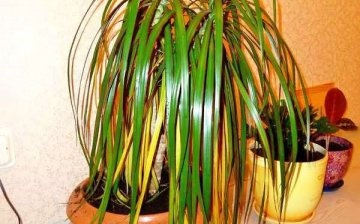

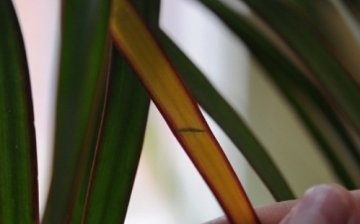
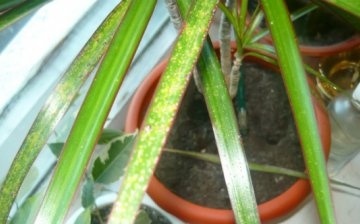
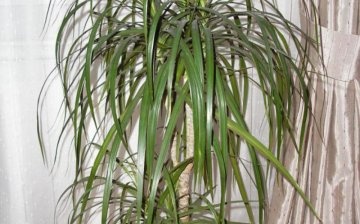
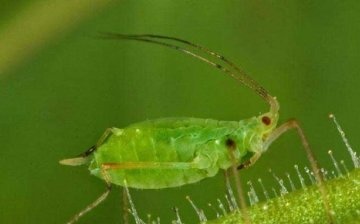











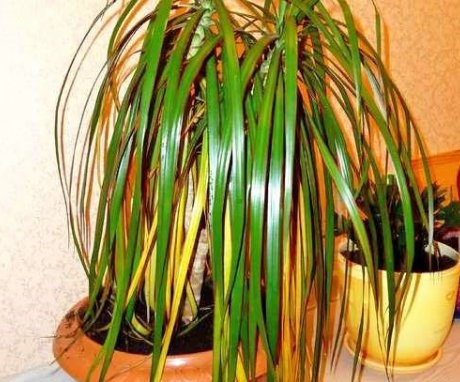
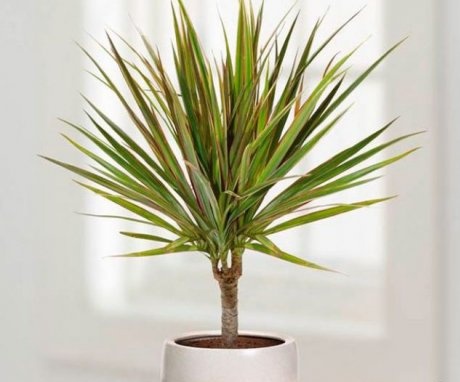
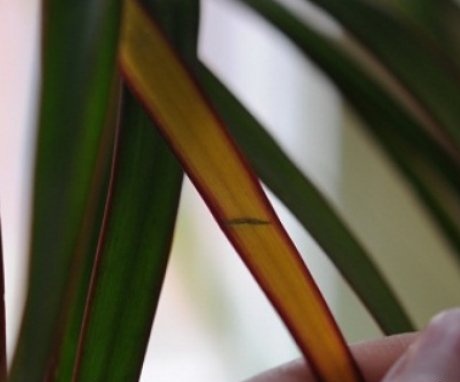
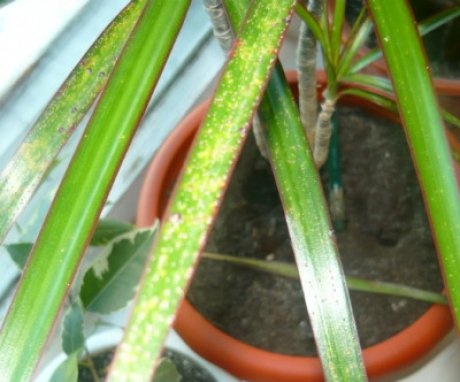
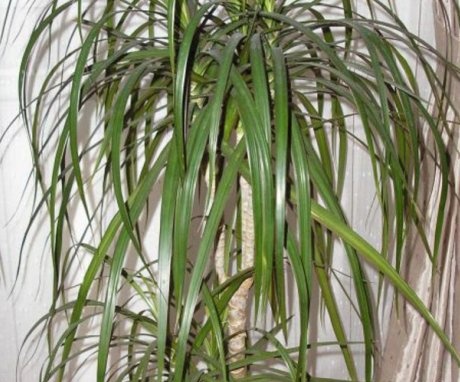
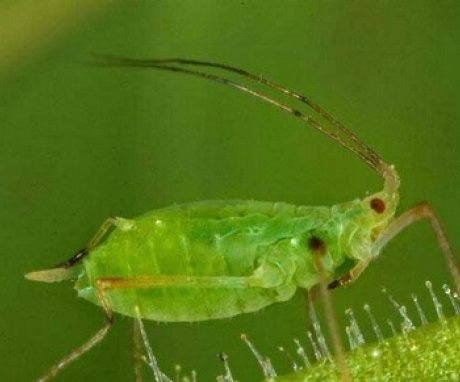
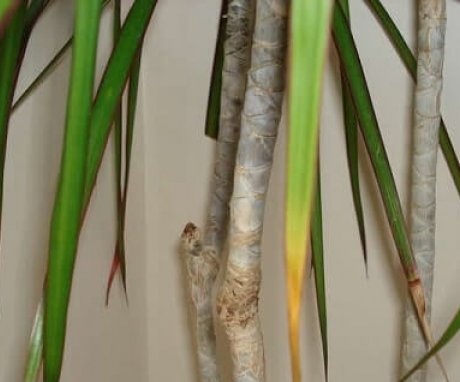

In principle, I never had any problems with dracaena. But pests love to hit it, so with each watering, I conduct a thorough inspection of the plant in order to deal with the problem at an early stage.
My dracaena MAzhenta leaves do not turn yellow, they have dropped by half. The transplant was a month ago. Watering after the soil dries out. Stands on the table opposite the window. What's the matter? Can someone tell me.